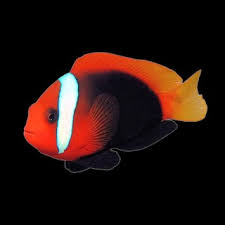China is home to some of the world’s most cherished fresh teas, ranging from delicate white teas to bold black teas and aged Pu-erh teas. While traditional Chinese tea brewing methods, such as Gongfu Cha, remain popular, tea enthusiasts worldwide are experimenting with new and creative techniques to bring out unique flavors, aromas, and textures.

This article explores modern and innovative ways to brew fresh Chinese tea, from cold brewing and tea lattes to carbonated tea infusions and tea cocktails. These contemporary methods not only enhance the natural flavors of Chinese tea but also introduce exciting new ways to enjoy tea in daily life.
1. Cold Brew Tea: A Refreshing Twist on Traditional Brewing
What is Cold Brew Tea?
Cold brew tea is a method where tea leaves are steeped in cold or room-temperature water for an extended period (usually 6–12 hours). This method extracts sweet, smooth flavors while reducing bitterness and astringency.
Best Chinese Teas for Cold Brewing
- Green Tea: Longjing (Dragon Well), Biluochun, Huangshan Maofeng
- White Tea: Silver Needle, White Peony
- Oolong Tea: Tieguanyin, Da Hong Pao
- Black Tea: Dianhong, Keemun
- Pu-erh Tea: Sheng Pu-erh (Raw Pu-erh)
Cold Brew Tea Recipe
Ingredients:
- 1 teaspoon of fresh Chinese tea leaves
- 500ml filtered cold water
- Optional: lemon slices, honey, or fresh mint leaves
Steps:
- Place tea leaves in a glass jar or pitcher.
- Pour cold water over the tea leaves.
- Cover and let it steep in the refrigerator for 6–12 hours.
- Strain and serve over ice.
Flavor Profile:
- Green tea: Crisp, slightly sweet, refreshing.
- White tea: Delicate, floral, and smooth.
- Oolong tea: Rich, fruity, with a creamy texture.
- Black tea: Bold, slightly malty, naturally sweet.
- Pu-erh tea: Earthy, deep, with a mellow finish.
Benefits of Cold Brew Tea:
✔ Less caffeine than hot-brewed tea.
✔ Naturally sweeter and smoother.
✔ Rich in antioxidants, promoting hydration.
2. Tea Lattes: A Creamy and Comforting Experience
What is a Tea Latte?
A tea latte is a creamy and frothy tea beverage made with steamed milk or plant-based milk alternatives. Unlike traditional Chinese tea, which is served plain, tea lattes create a smooth, velvety texture while enhancing natural tea flavors.
Best Chinese Teas for Tea Lattes
- Matcha-style Green Tea Latte: Use powdered green tea (ground Longjing or high-quality green tea).
- Oolong Milk Tea: Tieguanyin or roasted Wuyi rock tea.
- Black Tea Latte: Dianhong or Keemun black tea for a bold, malty taste.
- Pu-erh Tea Latte: Shou Pu-erh for an earthy, deep flavor.
Classic Oolong Tea Latte Recipe
Ingredients:
- 1 teaspoon Tieguanyin tea leaves
- 250ml hot water (85°C)
- 150ml steamed milk (dairy or plant-based)
- ½ teaspoon honey or vanilla extract (optional)
Steps:
- Brew oolong tea in hot water for 3–4 minutes.
- Heat and froth the milk.
- Strain the tea and mix with steamed milk.
- Add honey or vanilla extract for extra sweetness.
Flavor Profile: Creamy, slightly floral, and naturally sweet.
Creative Variations:
✔ Chai Pu-erh Latte: Add cinnamon, cardamom, and ginger to Pu-erh tea.
✔ Jasmine Green Tea Latte: Infuse jasmine-scented tea with vanilla almond milk.
✔ Black Sesame Oolong Latte: Blend roasted oolong tea with black sesame paste.
3. Sparkling and Carbonated Tea Infusions
What is Sparkling Tea?
Sparkling tea is a modern take on traditional tea, where carbonated water is infused with Chinese fresh tea. The bubbles create a light, refreshing texture while enhancing the tea’s natural aromas.
Best Chinese Teas for Sparkling Tea
- Jasmine Green Tea: Floral and delicate, pairs well with citrus flavors.
- White Tea (Silver Needle): Light and crisp, perfect for summer.
- Black Tea (Keemun): Bold, with hints of caramel and chocolate.
Jasmine Sparkling Green Tea Recipe
Ingredients:
- 1 teaspoon Jasmine green tea
- 250ml hot water (80°C)
- 250ml sparkling water
- 1 teaspoon honey or simple syrup
- Ice cubes and lemon slices (optional)
Steps:
- Brew jasmine tea for 2–3 minutes, then cool it down.
- Mix tea with honey and let it chill.
- Pour over sparkling water and ice.
- Garnish with a lemon slice.
Flavor Profile: Crisp, floral, and lightly effervescent.
✔ Variations: Add mint, ginger, or passionfruit for extra complexity.
4. Tea Cocktails: Infusing Chinese Tea into Mixology
What are Tea Cocktails?
Tea cocktails blend Chinese tea with spirits, herbs, and fresh fruit, creating elegant and aromatic drinks. Tea adds depth, tannins, and natural sweetness to classic cocktails.
Best Chinese Teas for Cocktails
- Pu-erh Tea: Pairs well with whiskey and dark rum.
- Longjing Green Tea: Light and fresh, great with gin or vodka.
- Black Tea (Dianhong): Bold and malty, ideal for bourbon-based cocktails.
Pu-erh Old Fashioned Recipe
Ingredients:
- 30ml Shou Pu-erh tea concentrate (brewed strong)
- 45ml whiskey or bourbon
- 1 teaspoon brown sugar syrup
- 2 dashes Angostura bitters
- Orange peel for garnish
Steps:
- Brew a strong Shou Pu-erh tea concentrate.
- Mix with whiskey, brown sugar syrup, and bitters.
- Stir over ice and garnish with an orange peel.
✔ Other Tea Cocktail Ideas:
- Jasmine Gin Fizz: Jasmine tea, gin, and lemon juice.
- Black Tea Whiskey Sour: Black tea, whiskey, and honey.
- Green Tea Mojito: Longjing tea, rum, and mint leaves.
Conclusion: Exploring New Ways to Enjoy Chinese Fresh Tea
Chinese fresh tea is no longer limited to traditional hot brewing methods. With modern innovations like cold brew, tea lattes, sparkling tea, and tea cocktails, tea lovers can reimagine the tea experience while still appreciating the deep heritage of Chinese tea culture.
By exploring new ways to prepare tea, we can unlock unique flavors, textures, and sensations, making tea more versatile and enjoyable for all occasions. Whether you’re looking for a refreshing summer drink, a cozy tea latte, or an elegant tea cocktail, these creative brewing techniques will enhance your love for Chinese tea.
Leave a Reply